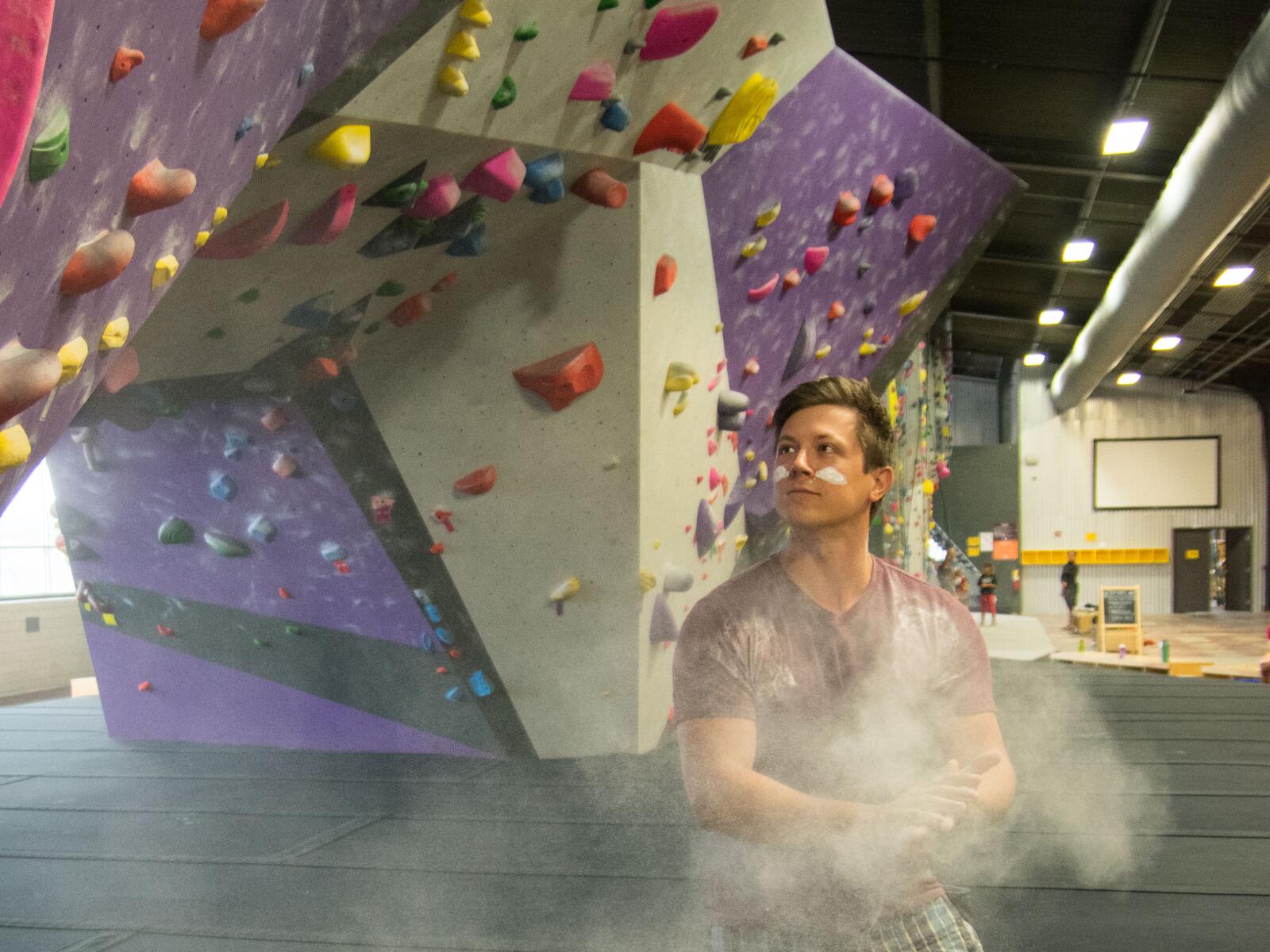ASCEND's Guide to Climbing Gym Etiquette

Breaking news: climbing is fun! While you probably know that already, you might not know some of the specifics that keep it fun. Many people think climbing is an extreme sport, but when done properly, climbing is actually a pretty controlled and accessible way to play both in and outdoors. As with any sport, there are some general rules we must follow to keep things rad and prevent the bad.
Whether you’re new to ASCEND or have been climbing here for a while, some of those rules are specific to our gym. Consider it the ASCEND code of climbing etiquette—stuff we all need to know to make our climbing experience and community the best it can possibly be.
You’ve probably seen some of these rules posted on the walls throughout the gym, and maybe you’ve got some questions. What’s spraying beta? Where should I keep my stuff? Can I take a nap on the pads? (hint: no!) Lucky for you, we’ve got the answers, so read on to find out how to become the best climber you can be.
And for those looking for a TL;DR, consider this: When you see something happen, like someone climbing in an unsafe manner or being disrespectful in any way, take initiative and be a good steward of the climbing community. We’re all in this together!
Personal Etiquette
Keep chalk on your hands and in your bag. There’s no need to choke your friends out with an obnoxious plume of chalk. (Note: we sell high volume, wide-mouth chalk bags made specifically for bouldering in the store!)
Don’t place hard or sharp objects on the pads. Shoes and chalk bags are essential for climbing, but extras like phones, keys, or water bottles aren’t. Keep these things off the pads and on a bench or in a cubby. No one wants a car key to the behind!
Don’t wear climbing shoes in the bathroom. This one should be self-explanatory. And if it’s not, just remember that shoes and hands share holds.
Social Etiquette
Don’t offer unsolicited advice to someone working a problem (aka spraying beta). Climbing routes are puzzles, and half the fun of climbing (the other half being sending) is using your body and brain to figure it out.
Don’t hang out on the pads with your crew (especially under overhanging walls like the wave wall or the cave). The climbing community is tight-knit and one of the best parts of climbing, but pads are for catching falls—catch up with friends on benches or the snack bar.
Communicate! Most of the time, we’re climbing, working problems, and trying hard around other climbers. Make eye contact, say hello, let someone go ahead of you, or ask to work a problem with someone.
Respect another climber’s space. Every climber is unique—personal space means comfort, and some people may want to have a laser-focused session.
Gender does not determine skill or strength. Don’t assume!
Be inclusive and respectful. Climbing attracts a diverse group of people. We love the range of genders, ethnicities, body types, and styles we see at ASCEND. Be respectful of all of these. And yes, this means shirts are required.
Safety Etiquette
DO:
Try to read a climber’s route before hopping on yours (it may traverse the wall).
Look at the wall before you climb and see who’s around you.
Approach the wall straight-on when you’re ready to climb.
Get off the pad to shake out or rest between attempts.
Anticipate a fall. Falling is part of climbing—learn how to fall in control!
DON’T:
Walk underneath the arch! Someone may be climbing—or falling—above you.
Walk sideways or around corners on the pads.
Get too close to others climbing beside you.
Downclimb the top-out boulder. People like to get to the top of things—that’s why we climb—but please utilize the downclimbing holds after your send.
Try to fight a fall and hold on too long. You might end up out of control and falling sideways or inverted (and that would suck)!
Dylan Jones, www.djonesmedia.com